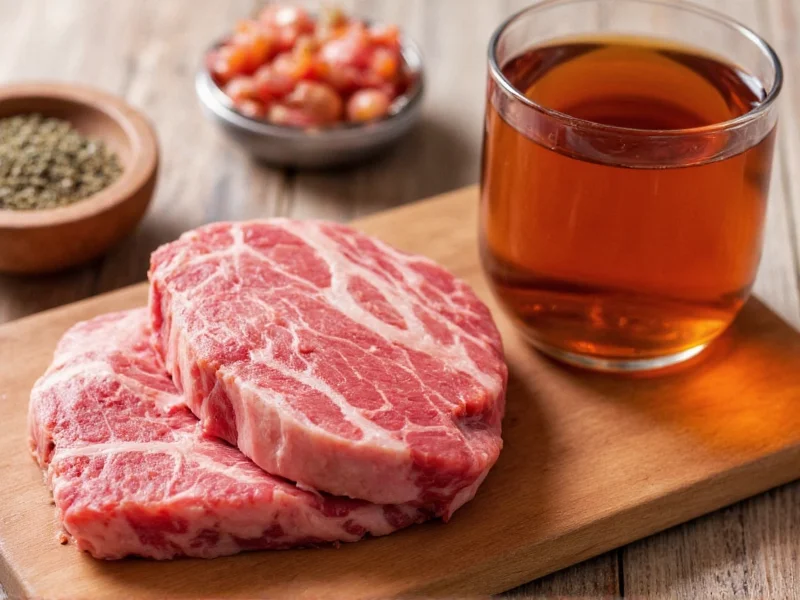Understanding the Fundamental Differences
Many home cooks use beef stock and beef broth interchangeably, but professional chefs recognize distinct differences that affect recipe outcomes. The confusion stems from similar appearances and overlapping uses, yet their preparation methods create unique culinary properties.
Beef Stock: The Culinary Foundation
Beef stock serves as a foundational element in professional kitchens. Created by simmering beef bones (often roasted first for deeper flavor) with vegetables and aromatics for 6-12 hours, stock extracts collagen from connective tissues. This process yields significant gelatin content, giving properly made stock a viscous texture that solidifies when chilled.
The extended cooking time develops complex flavors while creating a neutral base that enhances rather than dominates dishes. Stock typically contains minimal seasoning, allowing chefs to control final dish flavors. Its primary purpose is structural—providing body to sauces, gravies, and soups without overwhelming other ingredients.
Beef Broth: The Flavor-Forward Liquid
Conversely, beef broth prioritizes immediate flavor. Made primarily from meat trimmings (sometimes with bones) simmered 2-4 hours, broth extracts soluble flavors quickly. Manufacturers often add salt and seasonings, making many commercial broths ready-to-consume beverages.
Broth's shorter cooking time produces a clearer liquid with less body but more pronounced meat flavor. This makes it ideal for soups meant to be consumed as-is, like classic French onion soup or matzo ball soup. The question "can I substitute beef broth for beef stock" frequently arises, but understanding their distinct roles prevents culinary disappointment.
| Characteristic | Beef Stock | Beef Broth |
|---|---|---|
| Primary Ingredients | Bones (often roasted), connective tissue | Meat trimmings, some bones |
| Cooking Time | 6-12 hours | 2-4 hours |
| Gelatin Content | High (gels when chilled) | Low (remains liquid) |
| Flavor Profile | Subtle, neutral base | Bold, seasoned |
| Primary Culinary Use | Sauce bases, braising liquid | Finished soups, sipping broth |
When to Use Each: Practical Applications
Understanding "when to use beef stock instead of broth" separates amateur from professional results. Stock's gelatin provides mouthfeel and body to reductions like demi-glace. Its neutral profile makes it ideal for beef stock for soup bases where you control final seasoning.
Broth shines in dishes where liquid is the star. A well-made beef broth nutrition profile typically shows higher sodium (from added seasoning) but similar protein content to stock. For beef broth for soup recipes meant to be consumed directly, broth's ready-to-eat quality saves time.
Homemade Preparation Guidelines
Crafting homemade beef stock requires attention to detail:
- Roast bones at 400°F (200°C) for 30-45 minutes until deeply browned
- Cover with cold water, add mirepoix (onion, carrot, celery)
- Simmer uncovered 8-12 hours, skimming impurities
- Strain through cheesecloth for crystal-clear result
For beef bone broth vs regular broth, note that bone broth represents a hybrid—simmered 12-24 hours to maximize nutrient extraction, yielding higher collagen content than standard stock.
Substitution Strategies
While not ideal, substitutions work with adjustments:
- Stock for broth: Add 1 tsp salt and extra herbs per quart
- Broth for stock: Reduce by half to concentrate, or add 1 tbsp gelatin per quart
Remember that "beef stock vs beef broth for soup" depends on whether your soup requires structural integrity (stock) or immediate flavor (broth). In risotto or sauce preparation, stock's gelatin creates luxurious texture impossible with broth alone.
Nutritional Considerations
Nutritionally, both provide similar protein content, but differences emerge in other areas. Commercial broths often contain significantly more sodium for palatability. Homemade stock offers higher collagen content, potentially benefiting joint health. When examining beef broth nutrition facts, check for added MSG or artificial flavors common in lower-quality products.
Common Misconceptions Clarified
Several myths persist in culinary circles:
- Myth: Stock and broth differ only in salt content
Reality: Ingredient composition and cooking time create fundamental differences - Myth: Bone broth is nutritionally superior to stock
Reality: Extended simmering extracts more minerals, but health claims are often overstated - Myth: Gelatin indicates poor-quality broth
Reality: Gelatin demonstrates proper collagen extraction, a stock hallmark











 浙公网安备
33010002000092号
浙公网安备
33010002000092号 浙B2-20120091-4
浙B2-20120091-4